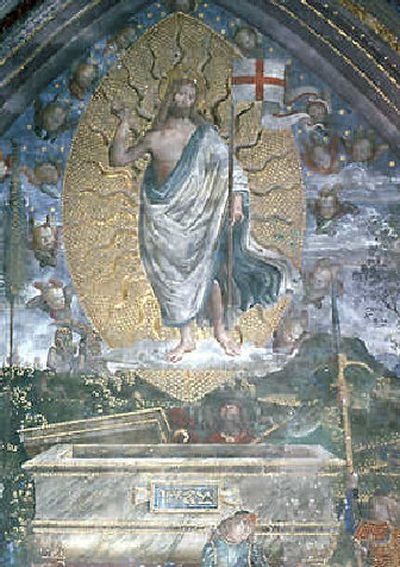Opposing views on Jesus’ resurrection

“I do not think anyone, anywhere, at any time brings dead people back to life,” says John Dominic Crossan, an energetic liberal now retired from the Roman Catholic DePaul University in Chicago.
“The proposal that Jesus was bodily raised from the dead possesses unrivaled power to explain the historical data at the heart of early Christianity,” says articulate conservative N.T. Wright, a Church of England bishop who has taught at Cambridge, McGill and Oxford universities.
There you have it – the old, yet ever-new Easter debate as represented by two current New Testament experts.
The New Orleans Baptist Theological Seminary last year decided a Crossan-Wright faceoff on Jesus’ resurrection was the perfect starter for a series of annual “point-counterpoint” debates.
The resulting confrontation is recorded in the new book “The Resurrection of Jesus: John Dominic Crossan and N.T. Wright in Dialogue” (Fortress Press, 220 pages, $18), which also includes papers from other participants.
Wright, first up, crisply defends the traditional Christian belief, using material from his book, “The Resurrection of the Son of God” (Fortress, 2003), this generation’s most important orthodox treatment.
Some of his reasoning:
• We must explain why the earliest Christians believed in Jesus Christ’s bodily resurrection and risked hostility and danger to rapidly spread the message.
• Pagan Roman culture didn’t anticipate such a miracle. Neither did Judaism, which believed in bodily resurrection but as a communal experience at the end of days. Nor did the Jews make resurrection part of their definition for the messiah, yet that’s what the earliest Jewish Christians said regarding Jesus.
• In the New Testament Gospels’ depiction, the risen Jesus was no ghost, disembodied spirit or vision. Jesus did not have a merely resuscitated corpse but a body with uncanny new properties, yet a physical body nonetheless.
Wright says only one explanation suffices from all this and it’s “rock solid”: The discovery that Jesus’ tomb was empty, plus his various physical appearances, provide the only plausible explanation for the rise of the early Christian faith as we know it.
He dismisses, one by one, the alternate explanations: that the ancients were naive and didn’t realize the dead don’t normally rise, that believers had group hallucination, or that they experienced Jesus’ living presence individually through contemplating his death.
Since no other alternative is adequate, Wright concludes that the traditional Christian belief remains the truth, “however unlikely.”
Crossan doesn’t attack Wright’s challenge head-on, nor fully explain why he’s skeptical. His basic approach is that even if the empty tomb and appearances occurred as the New Testament reports (which he doubts in other writings), this would merely mean Jesus arose in the sense that God exalted him, not that his body was resurrected.
Whether something literally happened isn’t important, he thinks, but rather the spiritual meaning of Jesus’ ongoing presence.
Crossan asks whether those early Christians took the Resurrection literally or, as he sees it, as a spiritual metaphor: “The honest answer must be, I do not have the faintest idea, nor does anyone else.”
Christian intellectuals have been debating this for the past 200 years, Crossan says, “and we have reached an impasse; nobody is persuading anyone else.”
He thinks the empty tomb is historically questionable and thus that Mark simply “made up” this report and later Gospels picked up the claim.
Wright’s ready response: “I don’t think anyone could have made up these stories, actually.”